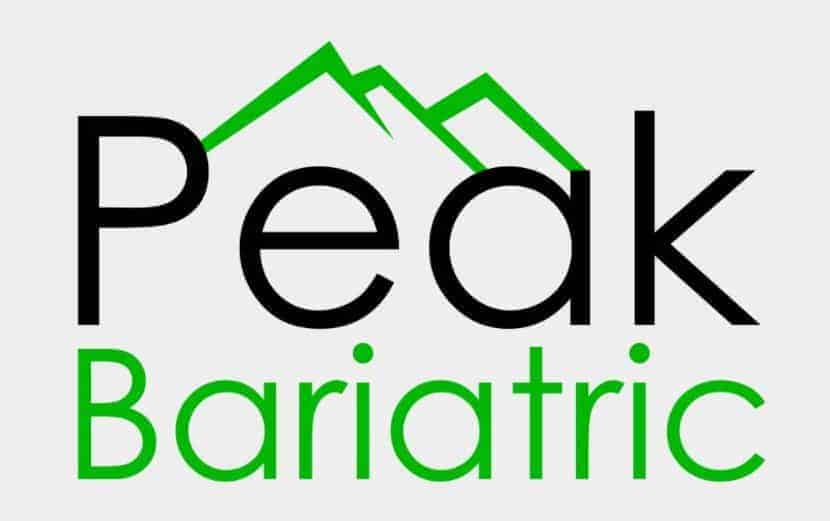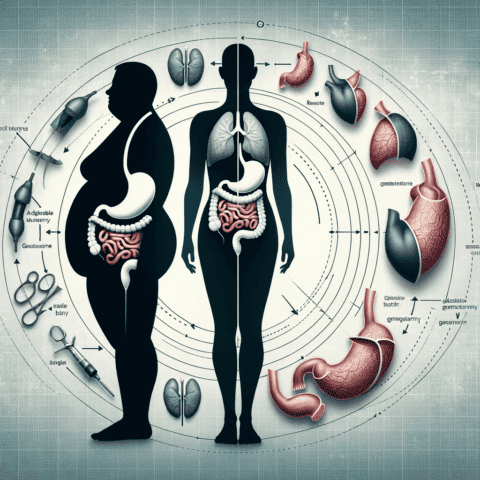Following a successful gastric bypass surgery, it’s essential to pair your new dietary habits with an effective exercise routine to maximize your weight loss results and overall health. This Dallas Gastric Bypass Exercise Guide is intended to help you navigate the journey of incorporating exercise into your lifestyle after undergoing a gastric bypass procedure.

Post-Op: Initiating Movement
“The journey of a thousand miles begins with a single step.” – Lao Tzu
This famous quote applies perfectly to your new journey towards physical fitness after gastric bypass. Your initial step involves understanding the emotional aspects of gastric bypass. Addressing these emotional aspects will help you build a stronger mindset towards regular exercise.
Once cleared by your medical team, you should begin with light and low-impact activities. Walking is an excellent way to start; it’s simple, flexible, and requires no special equipment. This initial stage is about movement rather than intensity, laying the foundation for a consistent exercise habit.
Cardiovascular Fitness: Building Endurance
After incorporating basic movement into your daily routine, the next stage is building your cardiovascular fitness. Cardio workouts are essential for weight loss as they increase your heart rate, improve your lung capacity, and burn calories. They also play a vital role in achieving long-term weight maintenance after gastric bypass surgery.
Biking, swimming, or using an elliptical machine are excellent low-impact cardio exercises. Remember, the goal is consistency, so choose an activity you enjoy to ensure you stick with it. Over time, as your endurance improves, you can gradually increase the duration and intensity of your workouts.
Strength Training: Sculpting Your Body
While cardiovascular exercise aids in weight loss, strength training is key in sculpting your body and building muscle mass. Muscles are metabolically active, meaning they burn calories even at rest, contributing to maintaining your weight loss.
Before starting a strength-training regimen, it’s crucial to prepare for a successful recovery. This means ensuring your incision areas are healed and your doctor has cleared you for this type of physical activity.
Start with bodyweight exercises, such as squats or lunges. As your strength improves, you can introduce light resistance using dumbbells or resistance bands. Additionally, consider working with a professional trainer who can guide you through the correct techniques to avoid injury.
Stretching & Flexibility: Preventing Injuries
Flexibility exercises and stretching are often overlooked, but they play a crucial role in overall fitness. These exercises improve your range of motion, promote better posture, and help prevent injuries – all essential aspects when embarking on a fitness journey after gastric bypass surgery.
Yoga and Pilates are great ways to improve your flexibility and core strength. Remember to include stretching at the end of each workout to aid in recovery and avoid muscle stiffness.
This is only the beginning of your exercise journey after gastric bypass surgery. As you progress, you may face challenges, but remember that overcoming common challenges after gastric bypass is not only possible but crucial to your success. In the next part of this guide, we’ll explore more advanced exercises and how to maintain motivation for a lifetime of fitness.
Strength Training for Gastric Bypass Patients
Having touched on the cardiovascular activities suitable for gastric bypass patients, it’s time to delve into the world of strength training. Strength exercises are pivotal in maintaining muscle mass during and after the weight loss phase. They also play a critical role in boosting your metabolism, hence aiding in long-term weight maintenance 1.
Post-Surgery Strength Training
Initially, after your Dallas gastric bypass procedure, heavy strength training is discouraged to allow the body time to heal and adapt to the new diet. But don’t worry, there are lighter strength training exercises that can be started a few weeks post-surgery. These are primarily body weight exercises that involve minimal equipment.
“It’s always important to listen to your body and consult with your doctor or a fitness professional before starting any new exercise program.”
Some good examples of these exercises include squats, lunges, push-ups (these can be modified to be less intense), and seated leg lifts. As you progress and become stronger, weights can slowly be introduced. As you transition to more challenging routines, ensure to do it gradually and prioritize proper form over intensity to avoid injury.
Addressing Common Exercise Misconceptions
When it comes to exercising after a gastric bypass, misconceptions are not uncommon. Many people assume that they can’t exercise after surgery or that they’ll lose muscles due to the procedure. However, this is not the case. Exercise, especially strength training, can help maintain and even increase muscle mass after surgery.
While it’s true that a period of rest is necessary immediately after surgery, most patients can start mild exercises within a few weeks. It’s a gradual process where you listen to your body and adjust your routine as needed.
Emotional Aspects of Exercise
Exercise not only benefits your physical health but also your mental and emotional wellbeing. Regular physical activity can help alleviate feelings of depression, anxiety, and improve overall mood. Understanding the emotional aspects of gastric bypass is vital in successfully navigating your journey.
A strong support system is integral during this time, as having people who understand your journey can make a significant difference. Whether it’s an exercise buddy, a family member, or a support group, don’t hesitate to reach out for motivation, encouragement, and understanding.
Footnotes
Dietary Guidelines for Gastric Bypass Patients
The final key to success in your weight loss journey after gastric bypass is a well-balanced and mindful diet. There’s a necessary shift in eating habits following the procedure. Here, we’ll discuss some of the primary dietary considerations for patients post-procedure.
Eating Smaller Portions
With a smaller stomach, you won’t be able to eat large meals like you might have previously. Instead, you’ll have to consume smaller, nutrient-dense meals throughout the day. It’s crucial to eat slowly, taking the time to chew thoroughly, to aid digestion and absorption.
Focusing on Protein
Protein is the cornerstone of your new diet. It’s essential for maintaining muscle mass while you lose weight, and it can help keep you feeling full longer. Aim for lean sources of protein, such as chicken, fish, eggs, or tofu. Protein shakes can be beneficial too, especially in the early stages post-surgery when solid food intake is still limited1.
Limiting Sugars and Fats
Sugary and high-fat foods should be limited post-procedure. These types of foods can lead to “dumping syndrome,” which can cause unpleasant symptoms like nausea, vomiting, and diarrhea. Furthermore, they offer little nutritional value and can slow down weight loss progress1.
Staying Hydrated
Staying well-hydrated is critical for health, especially after gastric bypass surgery. However, drinking fluids during meals can fill up your small stomach and reduce the amount of food you can consume. Therefore, it’s better to drink fluids between meals1.
Taking Vitamins and Minerals
Post-gastric bypass, you might need additional vitamins and minerals, since the procedure can limit the absorption of some nutrients. Speak with your healthcare provider or a dietitian about what supplements are best for you1.
In Conclusion
The journey of weight loss after a gastric bypass surgery is a comprehensive one. It’s not just about the surgery itself but also about lifestyle changes encompassing physical activity, strength training, and nutritional changes.
In this series of articles, we’ve aimed to shed some light on these crucial areas. However, always remember that everyone’s journey is unique. You should always consult with your healthcare team before making any significant changes to your exercise or diet routine.
Key Takeaways</h2.
Sure, here’s a bullet-point summary of the information on dietary guidelines for gastric bypass patients:
- Eating Smaller Portions: Due to the reduced stomach size, patients should eat smaller, nutrient-dense meals slowly and chew thoroughly for better digestion.
- Focusing on Protein: Protein is critical for maintaining muscle mass during weight loss and can promote feelings of fullness. Lean proteins are recommended.
- Limiting Sugars and Fats: Sugary and high-fat foods can lead to dumping syndrome, offer little nutritional value, and slow weight loss progress.
- Staying Hydrated: Proper hydration is essential, but it’s recommended to drink fluids between meals to avoid filling the smaller stomach prematurely.
- Taking Vitamins and Minerals: Post-gastric bypass patients may need additional supplements due to limited nutrient absorption.
In conclusion, weight loss after gastric bypass surgery involves more than just the surgery—it’s a comprehensive lifestyle change that includes physical activity, strength training, and dietary adjustments. As each patient’s journey is unique, it’s essential to consult with a healthcare professional before making any significant changes to exercise or diet routines.






